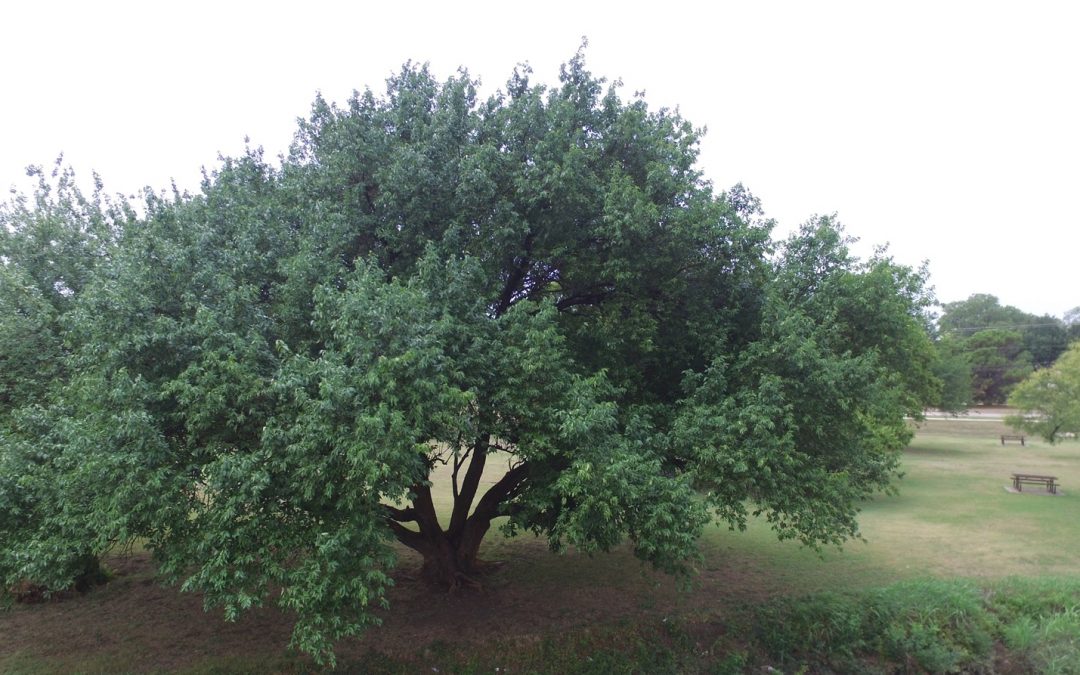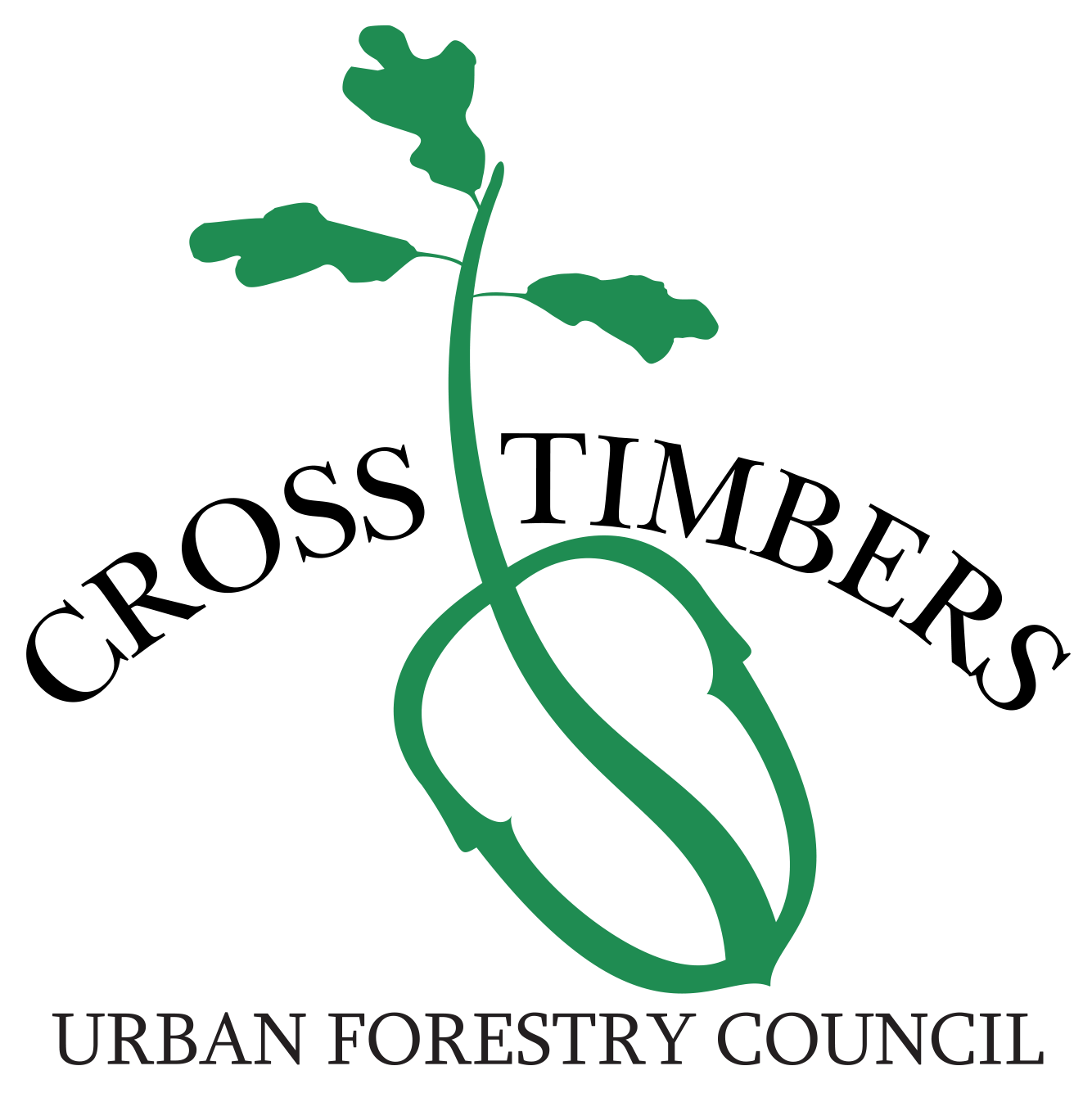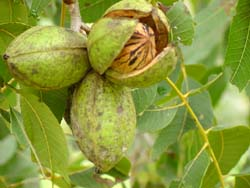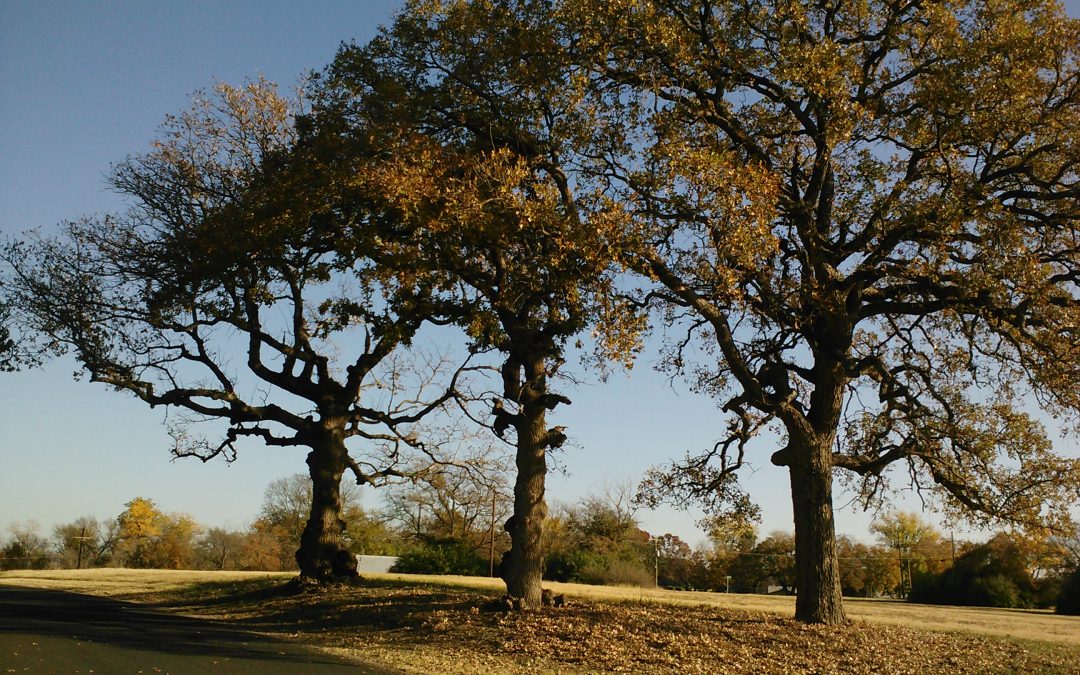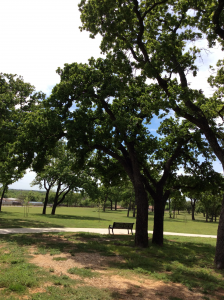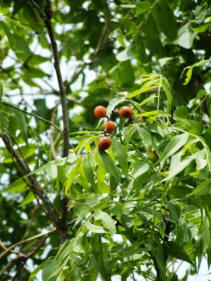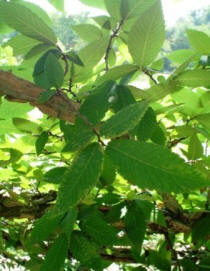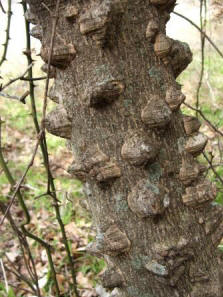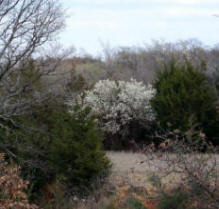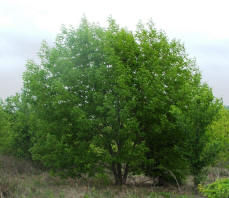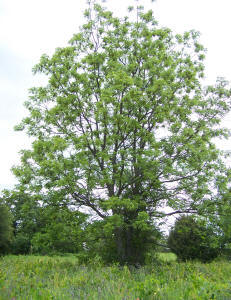Unique Trees of North Texas:
Pecan
(Carya illinoinensis)
By Laura M. Miller
The pecan is an overachieving member of the Juglandaceae (Walnut) family and a large growing, long lived, nut producing tree native to North Texas. A mature tree can be over 100 feet tall and 100 feet wide with a lifespan of over 300 years. The native range of the pecan stretches from Northern Mexico to Northern Illinois where pecans can be found along the banks of the Mississippi river almost all the way to Dubuque, Iowa.
Pecans are one of the easiest deciduous trees to identify in the winter because the shucks that protect the developing nuts usually remain attached to the stems. The presence of nuts on the ground is also an excellent indication that a pecan tree is nearby. Pecans produce alternately attached large pinnately compound leaves with 9-17 leaflets. In spring, they are one of the last trees to leaf out. Separate male (catkins) and female flowers are produced soon after bud break. The female flowers are borne in clusters on the tips of branches. The year of a heavy pecan crop, one where nut clusters develop on 50% or more of the branch terminals, are usually followed by a year of light production. Pecan leaves turn yellow before falling from the tree around the time of our first frost. Falling leaves are soon followed by falling nuts. Because they smell and look a lot alike, pecan trees can be confused with Black Walnut, Juglans nigra, or any of the nine species of hickory that are native to Texas. They are sometimes mistaken for other commonly planted species with similar pinnately compound leaves such as Chinese Pistache, Pistacia chinensis, or the native Western Soapberry, Sapindus saponaria, both producers of inedible berries rather than delicious nuts.
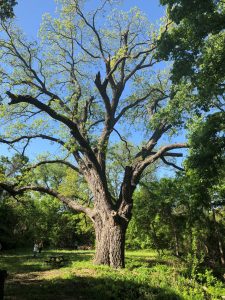
The National Champion pecan in Parker County near Weatherford. It is 98 feet tall with a spread of 120 feet and a circumference that measured 268 inches.
Long before being named the State Tree of Texas in 1919, the pecan played an important role in Texas history. When Cabeza de Vaca was shipwrecked in Texas in 1528, he documented the pecan as an important dietary staple of the Native Americans he encountered. Pecans were gathered in the fall and eaten through the winter months when food was scarce. Today residents of North Texas can gather or purchase pecans and keep them in the freezer for those times when food is scarce. A one ounce serving of pecans provides 3g dietary fiber (11% Daily Value), 3g plant protein, mostly monounsaturated fat and significant quantities of Thiamin, Beta carotene, Magnesium, Manganese, Copper, and Zinc.
Native pecan trees are found primarily in deep alluvial soils near rivers and streams and are especially abundant along the major rivers of North Texas, the Red, Trinity, and Brazos. Pecans can be planted at any site in North Texas that can accommodate a large shade tree.
Native pecan trees produce nuts that vary in size, shell to nut ratio, and flavor, Since the 1880s, which is not very long for a cultivated crop, horticulturist have been selecting the best native trees for propagation. In the 1930s, the United States Department of Agriculture began a pecan breeding program that continues to this day in Brownwood and College Station. Many of the most highly recommended cultivars for the Cross Timbers have come from this program including Caddo, Oconee, Pawnee, Kanza, Nacono, Sioux and Wichita. Desirable, the leading cultivar in the state that produces the most pecans whose name must not be mentioned, is also an excellent choice. The sentimental favorite is probably Burkett, a native selection widely distributed by J.H. Burkett North Central Texas in the 20s and 30s. The trees of cultivars made famous by Arlington nurseryman O.S.Gray in the 40s, 50s, 60s, and 70s such as GraKing and GraTex still grow in many Arlington landscapes.
Even though no other shade tree offers the key ingredient to delicious pies, pralines, cookies, and German Chocolate Cake frosting, pecans do have some negative qualities as landscape trees. They are messy dropping not just nuts in the fall but also leaves and petioles that don’t rake up easily. In the spring those male flowers can be almost as much trouble to clean up as the leaves in the fall. Couple this with a tendency to drop branches due to shade, heavy nut crops and possibly just because they want to, and you have a tree that is exceptionally well suited to someone who very much enjoys picking up sticks (and leaves, and petioles, and catkins). Like most plants that produce something good to eat, pecan trees will attract lots of birds, especially crows, squirrels, racoons, and foraging neighbors. Insects are also fond of pecans, and you can expect Pecan Nut Casebearers, Hickory Shuckworms, and Fall webworms. Pecan scab is a serious fungal disease problem east of I-35 and can be problematic here if environmental conditions are conducive to disease development. Fortunately, there are many excellent cultivars that are scab resistant. Pecans grown on high pH calcareous soils benefit from foliar zinc sprays.
The National Champion pecan (pictured above) is in Parker County near Weatherford. In the Palo Pinto town of Oran, the Goodnight-Loving Pecan sheltered the 1866 partnership of cattlemen Charles Goodnight and Oliver Loving. In Fort Worth, the Hollow Pecan of the Fort Worth Botanic Garden (RIP 2014) no longer shelters small children hiding from their parents, but there are many old large native pecan trees there and across University Avenue in Trinity Park.
